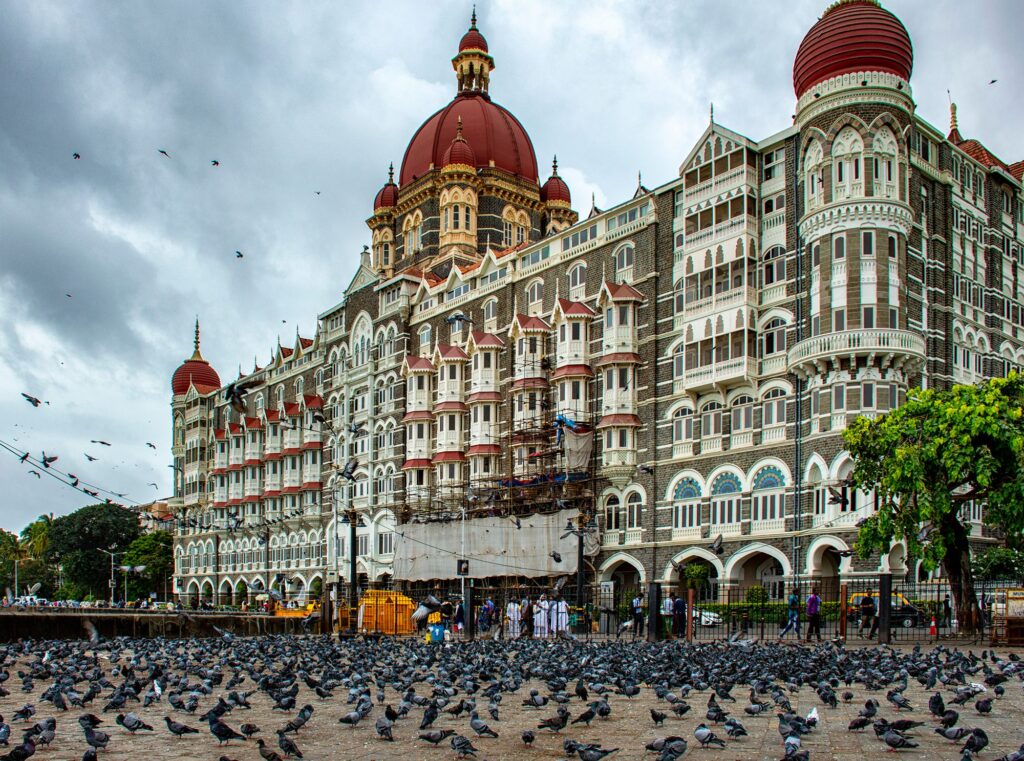
freepik
Mumbai, famously known as the “City of Dreams,” is often celebrated for its vibrant nightlife, Bollywood glamor, and modern lifestyle. However, beneath its bustling cityscape lies a treasure trove of history. From colonial architecture to ancient caves and grand heritage buildings, Mumbai offers history enthusiasts a chance to step back in time and explore its rich cultural past.
In this blog, we’ll take you through the top historical places to explore in Mumbai that beautifully reflect the city’s heritage and significance.
Gateway of India
The Gateway of India is undoubtedly the most iconic historical monument in Mumbai. Built in 1924 to commemorate the visit of King George V and Queen Mary, this grand structure is located on the waterfront in Colaba, overlooking the Arabian Sea.
- Architectural Style: Indo-Saracenic with influences of Hindu and Muslim architecture.
- Significance: It served as the ceremonial entrance for British Viceroys and later became a symbol of the British Raj’s departure from India in 1948.
- Best Time to Visit: Early mornings or evenings for beautiful views and photographs.
Today, the Gateway of India is not just a historical landmark but also a popular gathering spot for locals and tourists.
Chhatrapati Shivaji Maharaj Terminus (CSMT)
Formerly known as Victoria Terminus, this UNESCO World Heritage Site is a masterpiece of Victorian Gothic Revival architecture. Built in 1887 to commemorate Queen Victoria’s Golden Jubilee, CSMT is a bustling railway station that beautifully combines Indian and European architectural styles.
- Key Highlights:
- Magnificent domes, pointed arches, and intricate stone carvings.
- Daily operations as one of India’s busiest railway stations.
- Why Visit: It’s a living example of Mumbai’s colonial past and a photographer’s paradise.
Even amid the chaos of trains and passengers, CSMT stands as a majestic reminder of Mumbai’s history.
Elephanta Caves
Located on Elephanta Island, about 11 km from the city, the Elephanta Caves are a must-visit for history and archaeology lovers. Dating back to the 5th to 8th centuries, these rock-cut caves are dedicated to Lord Shiva and showcase exceptional Indian rock-cut architecture.
- Highlights:
- The massive Maheshmurti sculpture depicting the three faces of Shiva.
- Intricately carved pillars and panels that narrate Hindu mythology.
- How to Reach: A ferry ride from the Gateway of India takes around one hour.
The Elephanta Caves are a UNESCO World Heritage Site, offering a serene escape into Mumbai’s ancient past.
Mani Bhavan
For those interested in India’s freedom struggle, Mani Bhavan is a place of immense historical importance. Located in the Gamdevi area of Mumbai, this was Mahatma Gandhi’s residence in the city from 1917 to 1934.
- What to See:
- Gandhi’s personal belongings, photographs, and letters.
- A library and exhibits showcasing the history of India’s independence movement.
- Significance: Mani Bhavan is where Gandhi initiated important movements like the Civil Disobedience and Satyagraha campaigns.
This peaceful heritage building is a must-visit for anyone who wants to connect with India’s political history.
Bombay High Court
The Bombay High Court, built in 1878, is another striking example of Gothic Revival architecture in Mumbai. Located in the Fort area, it has been a significant center of the Indian judicial system for over a century.
- Architectural Charm:
- Tall towers, arched windows, and elegant detailing.
- The structure resembles classic European medieval architecture.
- Historical Importance: It has been the site of several landmark cases in India’s history.
While you may not be able to explore the interiors freely, the building’s exteriors are a treat for history and architecture enthusiasts.
Haji Ali Dargah
Built in 1431, Haji Ali Dargah is one of Mumbai’s most recognized landmarks, blending religious and historical significance. This beautiful white marble mosque and tomb is located on an islet off the Worli coast.
- Why It’s Special:
- Constructed in memory of a wealthy merchant who gave up worldly life for Sufism.
- A stunning example of Indo-Islamic architecture, accessible via a narrow causeway during low tide.
- Best Time to Visit: Sunset, when the Dargah reflects in the golden waters of the Arabian Sea.
Haji Ali stands as a symbol of Mumbai’s diverse cultural and spiritual heritage.
Mount Mary Basilica
Though primarily a religious site, the Mount Mary Basilica in Bandra has stood for over 100 years and is deeply rooted in Mumbai’s colonial history. The annual Bandra Fair attracts pilgrims and tourists alike, making it a vibrant historical and cultural experience.
- Architecture: A beautiful blend of Gothic and Roman styles.
- Cultural Impact: It is a symbol of Mumbai’s cosmopolitan spirit and faith-based heritage.
Dr. Bhau Daji Lad Museum
Established in 1855, this is Mumbai’s oldest museum and a hidden gem for history lovers. Located in Byculla, the Dr. Bhau Daji Lad Museum showcases the city’s cultural and industrial history.
- What You’ll See:
- Decorative arts, maps, and photographs depicting 19th-century Mumbai.
- Rare artifacts, including miniature clay models of the city’s evolution.
- Tip: Combine your visit with a stroll in the adjacent Byculla Zoo for a complete day out.
Final Thoughts
Mumbai is not just about skyscrapers and sea views—it’s a city with layers of history waiting to be uncovered. From the ancient Elephanta Caves to colonial landmarks like CSMT and the Gateway of India, every historical site tells a unique story about the city’s evolution.
Whether you are a history enthusiast, architecture lover, or curious traveler, exploring these top historical places in Mumbai will give you a deeper appreciation of the city’s rich heritage and timeless charm. If you’re planning your next visit, booking Indian Eagle flights from the USA can make your journey seamless and affordable. Travelers flying from New York to Mumbai can experience the city’s vibrant history firsthand while enjoying a comfortable and convenient trip.






